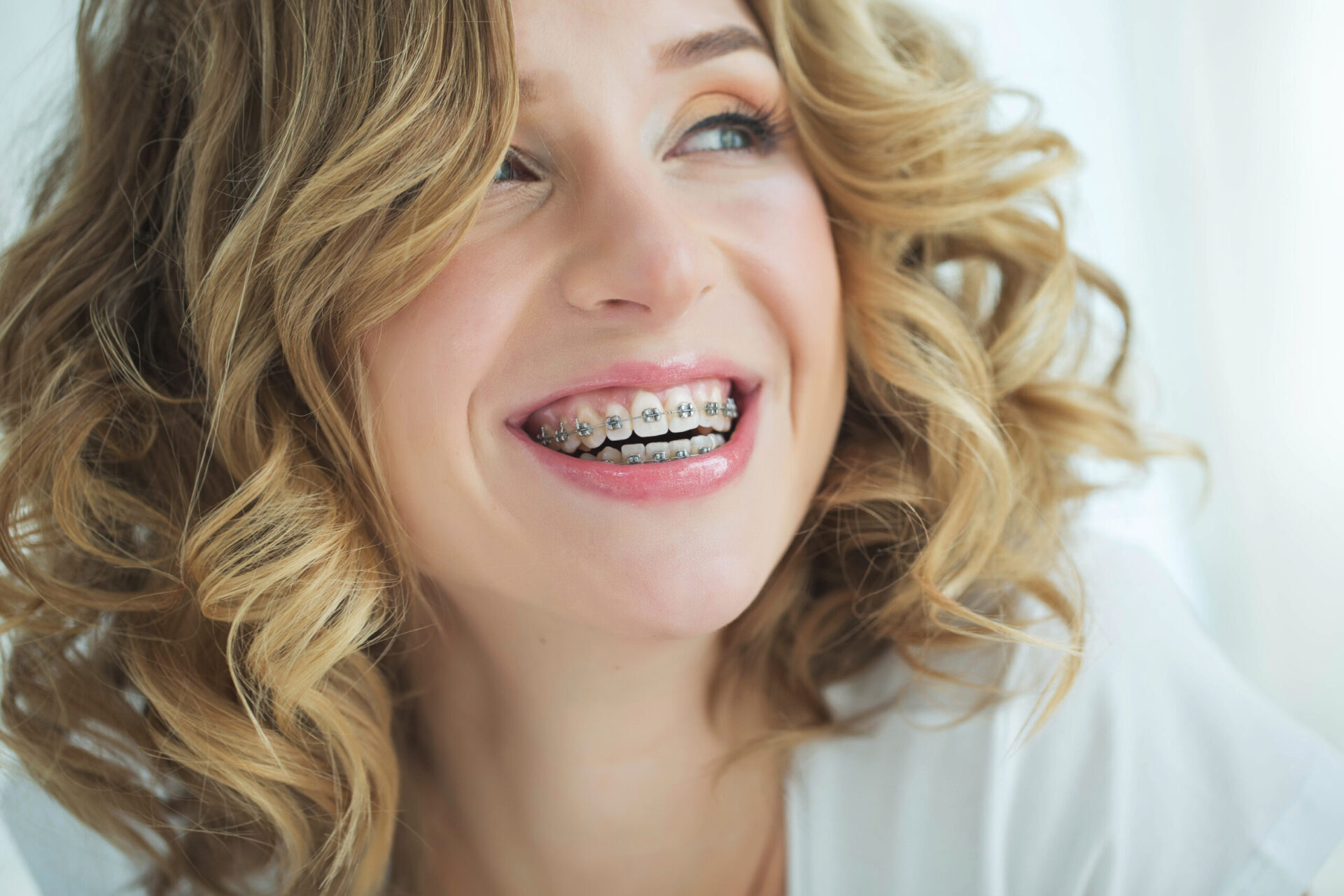Do you dream of the heavenly smile, but tooth misalignments and stains are a huge roadblock in your way? We know your struggle, and more than anything, you must seek a particular dental intervention to obtain an aesthetic smile.
Fortunately, we are here to be your guiding compass, explaining the nitty gritty of veneers vs braces. These two effective options hold distinct promises and serve diverse purposes in pursuing dental perfection.
So, let’s explore the difference between veneers vs braces that will help you determine which treatments provide you with the best dental care.

Veneers are ultra-thin shells prepared from porcelain or composite resin, custom-crafted to fit over the front surface of teeth. Their primary purpose is cosmetic, aimed at enhancing the appearance of teeth by concealing imperfections such as stains, chips, or gaps.
Veneers have three main types;
Porcelain veneers provide a natural appearance while effectively concealing stains, chips, and gaps. Their resilience makes them a long-lasting cosmetic solution, ensuring enduring aesthetic benefits.
Composite veneers are made from tooth-colored resins applied directly to the teeth and sculpted for a seamless finish, offering a quick and effective cosmetic enhancement. They are a versatile option for improving the appearance of teeth with minor imperfections.
Lumineers are ultra-thin porcelain that require minimal tooth preparation, preserving the natural tooth structure. These deliver a radiant and minimally invasive cosmetic transformation suitable for those seeking a conservative yet impactful enhancement.
Braces are orthodontic devices designed to correct teeth misalignment and bite issues. They consist of brackets, wires, and sometimes bands, working together to apply controlled pressure on the teeth, gradually guiding them into proper alignment. Here are the three main types of braces;
These are made from stainless steel and wires. They remain a highly effective and durable orthodontic solution for correcting many teeth misalignments. Their robust design ensures precise and comprehensive alignment throughout treatment.
Ceramic braces are prepared from clear or tooth-colored, providing a less noticeable alternative to traditional metal braces. This makes them a popular choice for those concerned about aesthetics. They combine effective orthodontic correction with a more discreet appearance.
Invisalign offers a virtually invisible orthodontic option utilizing a series of clear, removable aligners. These are ideal for mild to moderate alignment issues and provide flexibility and a discreet treatment experience. The removable nature of the aligners also allows for greater convenience during daily activities such as eating and oral hygiene.
In terms of longevity, the key distinction between braces vs veneers lies in the nature of their respective treatments.
Braces, once they have successfully aligned teeth, can provide a lasting result when coupled with proper post-treatment care with retainers. With diligent use of retainers as prescribed by the orthodontist, the achieved alignment can be maintained permanently. On the other hand, veneers have a finite lifespan. Regardless of whether they are made of porcelain or composite resin, veneers will eventually require replacement.
The effectiveness of veneers and braces can be evaluated based on their impact on dental aesthetics and structural improvements.
Veneers excels in delivering immediate and striking cosmetic enhancements, providing a quick solution for individuals seeking a transformed smile. Conversely, braces are highly effective in achieving comprehensive orthodontic corrections. They offer a functional and lasting solution for those with structural dental challenges.
Veneers offer a convenient, time-efficient solution for individuals seeking rapid cosmetic improvements. The application process is typically completed in a few appointments, with immediate results. Moreover, the maintenance of veneers is relatively straightforward, requiring standard oral hygiene practices.
However, the convenience that comes with braces is nuanced and often requires a longer time commitment. Also, braces demand conscious flossing and brushing around them as a step of proper care.
Braces, especially the traditional metal ones, can be pretty noticeable with their shiny brackets and wires. This visibility, while showcasing the journey to a straighter smile, is a big turn-off for people. It’s like wearing a badge of commitment to achieving a well-aligned set of teeth.
On the other hand, veneers take a more low-key approach. Whether made of porcelain or composite materials, they blend seamlessly with natural teeth, hiding imperfections.
Veneers are generally considered a higher upfront investment as they are priced per tooth. The cost of veneers varies with factors like the material used (porcelain or composite), the dentist’s experience, and the location of dental practice. For instance, porcelain veneers, being more durable and providing a natural appearance, often come with a higher price tag. Also, dental insurance may not cover their cost, as it is often considered elective.
Comparatively, the cost of braces relies on the type of braces chosen, the severity of orthodontic issues, and the duration of treatment. Traditional metal braces are usually more budget-friendly than alternatives like ceramic braces or Invisalign. Additionally, some dental insurance plans cover braces’ costs, particularly when the treatment is deemed medically necessary to address orthodontic concerns.
The choice between veneers and braces is nuanced and depends on the nature of the dental concerns at hand, as well as individual preferences. Veneers are ideal for those desiring a quick fix for minor cosmetic flaws, and the process is reversible to a limited extent. On the other hand, braces are a more extensive commitment. They offer a comprehensive correction but require patience and adherence to maintenance practices.
Overall, both of these treatments are tailored to your dental preferences, and our guide mentioned above has simplified it for you to make an informed decision. However, finding the right dental experts is quite draining. Well, not anymore. Hesed Dental is here to help you.
We are your perfect partners in carving the ideal smile with robust dental procedures and expert consultations. Our dental professionals take the time to comprehend your dental concerns and devise an ideal and tailored dental solution. If you are looking for Porcelain veneers in NJ, we have got you covered.
Contact us now to get started with your healthy dental living.

Hesed Dental 543 Gorge Road Cliffside Park, NJ 07010
201 941 8877